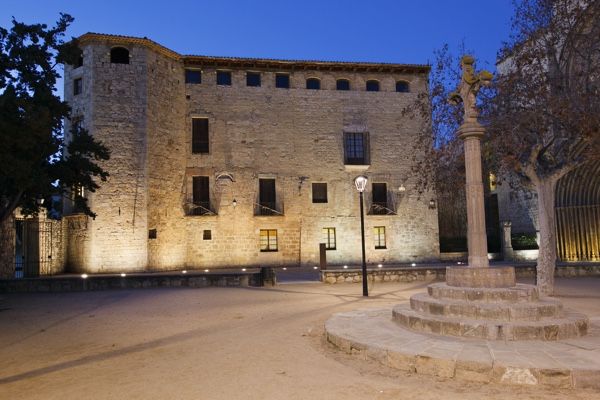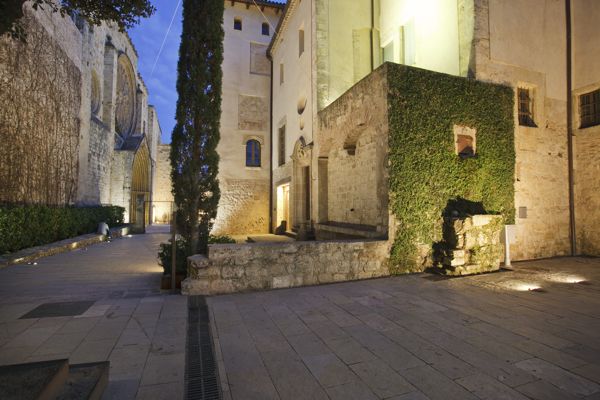Abbot’s Palace, symbol of the feudal power
In the 13th century a castle where the different Kings of Aragon spent some time was built upon the remains of an older building, probably a hospital. The fortress, symbol of the feudal power of the Monastery, finally became the residence of the abbot from the 14th century. It has an attached raised cistern to supply water to the monks and the Cloisters’ jet. King Philip V’s order to destroy the Catalan castles meant that the building became a palace, so that its façades were altered and they built upon the former Gothic courtyard. Since the monastic secularisation, it has been the parish house.

From Hospital to Abbot’s Palace
In the 10th century there was an early building in the place today occupied by the Abbot’s Palace, probably a hospital for poor people and pilgrims. Two hundred years later, the hospital was moved to the other side of Octavià Square, in the street bearing its name.

Cistern of the monastery
Wells have always supplied water to the Monastery and the town of Sant Cugat. The construction of the Romanesque Cloister and the desire to have a central jet involved looking for water at a certain distance and building a mine or piping that ended in a raised cistern.